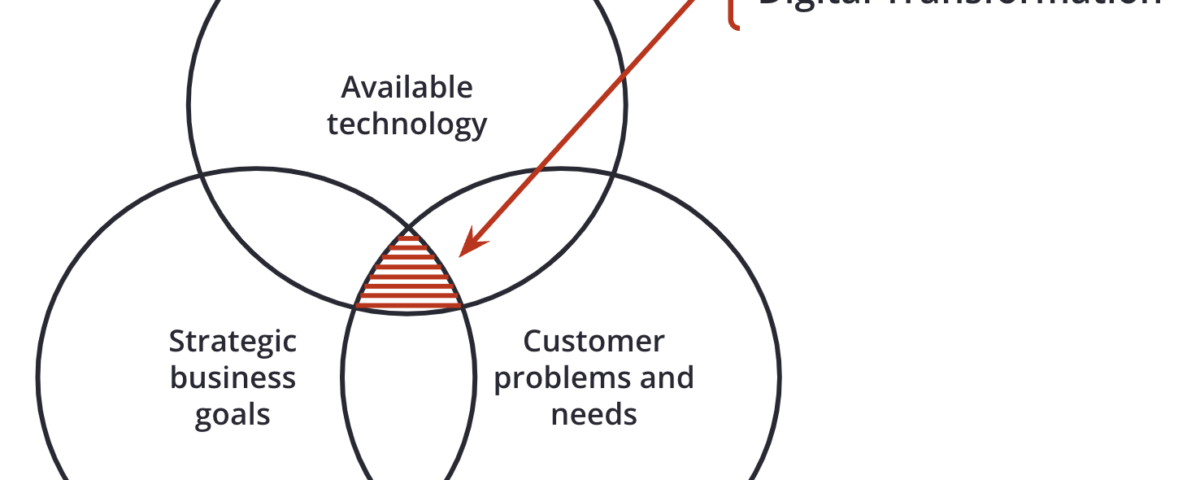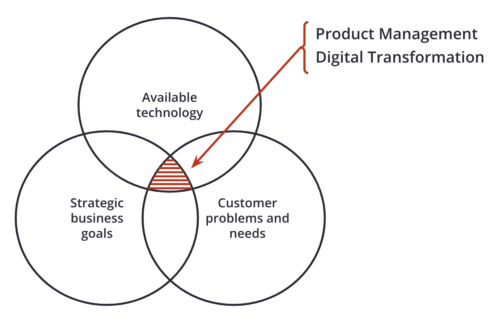
How to increase productivity?
21 de March, 2023
Layoffs and free coaching
2 de April, 2023I have already mentioned to some people that I am working on my 4th book. The theme of this book will be Digital Transformation, as I have increasingly seen how product management and how we develop digital products are essential skills to increase the chances of success in a digital transformation. I already have 1/3 of it written, and I’m organizing myself to release it in the second semester in Portuguese. The English version will come right after. In the meantime, I will publish some chapters here to collect feedback. This is the first chapter, where I define the term digital transformation, explain why I see a lot of similarity between digital transformation and product management, and show the difference between project and product.
Each chapter has a “Summing up” section at the end, which is intended to be a quick guide to the content of each chapter to help you quickly review it before moving on, just like in my book Digital Product Leadership.
New to this book compared to my previous books are the “Recommendation” sections at the end of each chapter. They are intended to highlight some important aspects of the chapter to be considered by people with little experience using digital technologies in their day-to-day business.
The so-called digital transformation
When I received the invitation to join Lopes Consultoria de Imóveis to lead its digital transformation, I began to voraciously study the subject to prepare myself for the challenges and opportunities that lay ahead.
In an internet search to find a good definition for the term digital transformation, I found over 840 million results on Google. When I went to Amazon to look for books on the topic, I found more than 5,000 books.
I consumed some of this content and talked to some people who had already participated in digital transformations. I ended up arriving at a definition that helped me along my journey:
DIGITAL TRANSFORMATION
Digital transformation is the adoption of digital technologies to enhance the business by offering a better experience in the customer journey and operational efficiency gains coming from automation and improvements in the company’s processes.
Digital technologies are tools, systems, and equipment that generate, store, and process information. Some examples of digital technologies are computers, tablets, mobile phones, apps, software, websites, algorithms, the internet, artificial intelligence, data science, blockchain, virtual reality, drones, the internet of things (IoT), 3D printers, etc.
New digital technologies are constantly being created and are becoming available. In early 2023, ChatGPT gained great popularity as a chatbot (chat conversation robot) with artificial intelligence capable of interaction in a conversational mode, which allows it to answer follow-up questions, admit its mistakes, dispute incorrect assumptions, and reject inappropriate requests.
These technologies are increasingly present in our daily lives. In a way, we human beings are also undergoing a digital transformation, as we use digital technologies for a good part of our needs, to manage our money, to entertain ourselves, to socialize, to move around, to feed ourselves, and so on. I believe it is very difficult to imagine some of our daily tasks without the use of digital technologies. That is, the use of digital technologies is already prevalent among people. For this reason, companies must accelerate the adoption of digital technologies at the risk of, if they don’t, losing connection with their customers.
This definition of digital transformation brings to mind the definition of a well-known discipline in technology companies, which is the discipline of managing digital products:
DIGITAL PRODUCT MANAGEMENT
It is the function responsible for making the connection between the company’s strategy and the problems and needs of customers through digital technologies. This person must at the same time help the company achieve its strategic objectives, while solving problems and meeting customer needs.
This proximity of concepts between digital transformation and digital product management makes two very important points clear:
- digital transformation and digital product management are very close topics. Consequently, people with relevant experience in digital product management can help companies and teams that want to carry out a digital transformation.
- just as in the development of digital products we have a beginning and a middle, but we do not have an end, the same happens with digital transformations, they have a beginning and a middle, but they do not have an end. They will be in constant evolution.
This last point has to do with the difference between project and product. It is common in companies for people to define initiatives as projects, that is, something with a clearly defined beginning, middle, and end. However, when we are talking about digital transformation, we are talking about something that will never end, despite having a beginning and a middle.
Project and product
To help clarify this difference, it is important that we understand the difference between project and product:
| Project | Product |
|---|---|
| It has a clearly defined beginning, middle, and end | The beginning and middle are identifiable, but the end is not |
| Focus on delivery with a well-delimited path | Focus on results with a well-defined objective |
| Closed scope defined in the planning | Testing and validation of ideas lead the way |
| It may work in predictable scenarios | Suitable for volatile scenarios and contexts |
To help make these differences tangible, here are some examples:
- Locaweb: before having its own datacenter, Locaweb placed its servers in Embratel’s datacenter. In 2006 Locaweb decided to invest in its own datacenter, which was clearly a project. In fact, two projects. The construction project of the own datacenter and the project of migrating the servers that were at Embratel to the own datacenter. Locaweb’s products (Web Hosting, Email Marketing, Virtual Store, etc.) are clearly products.
- Building: the construction of a building, from its conception to the delivery of the keys, is a project with well-defined phases. On the other hand, after the keys are handed over to the buyers, we can look at a building as a product. People will live in the building. Some apartments will be rented. Others will be sold. There will be renovations, condominium management, and so on.
- Wedding: the decision to get married and the entire wedding process is clearly a project, with the wedding ceremony, party, and honeymoon. After the honeymoon is over and married life begins, we must look at marriage as a product, married life, children and grandchildren, the family, and everyday life as a family.
These differences between project and product make it clear that the digital transformation journey is much more a journey of product development and evolution than a project with a clearly defined beginning, middle, and end.
Recommendation
For this reason, get ready! You and your business are embarking on an incredible, ever-evolving journey that will transform how you generate and deliver value to your customers and your business.
Understanding what a digital transformation is is essential to increase your chances of success. The use of digital technologies is increasingly prevalent in our daily lives, and companies that do not transform themselves run the risk of being passed over.
Attention: this journey has a clear beginning and middle, but it will have no end. You, your team, and your company must constantly seek to update not only on the new technologies available but also on the best ways to apply them to achieve the goals of your customers and your company.
Summing up
- Digital transformation is the process of adopting digital technologies to enhance the business by offering a better experience in the customer journey, and operational efficiency gains from automation and improvements in the company’s processes.
- There is a proximity of concepts between digital transformation and digital product management since the latter is the function responsible for connecting the company’s strategy and the problems and needs of customers through digital technologies.
- Digital transformations have a beginning and a middle but no end. It is a journey of constant evolution, which will transform how you create and deliver value to your customers and your company.
Workshops, coaching, and advisory services
I’ve been helping companies and their leaders (CPOs, heads of product, CTOs, CEOs, tech founders, and heads of digital transformation) bridge the gap between business and technology through workshops, coaching, and advisory services on product management and digital transformation.
Newsletter
I write regularly about product management, product development, digital product leadership, and digital transformation. You can receive a notification whenever I publish a new article without depending on any social network algorithms to notify you! Just subscribe to my newsletter.
Digital Product Management Books
Do you work with digital products? Do you want to know more about managing a digital product to increase its chances of success, solve its user’s problems and achieve the company objectives? Check out my Digital Product Management bundle with my 3 books, where I share what I learned during my 30+ years of experience in creating and managing digital products:
- Startup Guide: How startups and established companies can create profitable digital products
- Product Management: How to increase the chances of success of your digital product
- Leading Product Development: The art and science of managing product teams
You can also acquire the books individually by clicking on their titles above.



